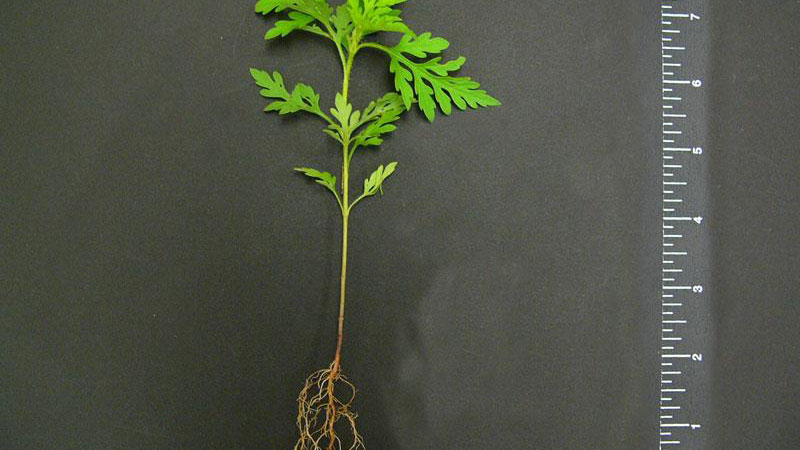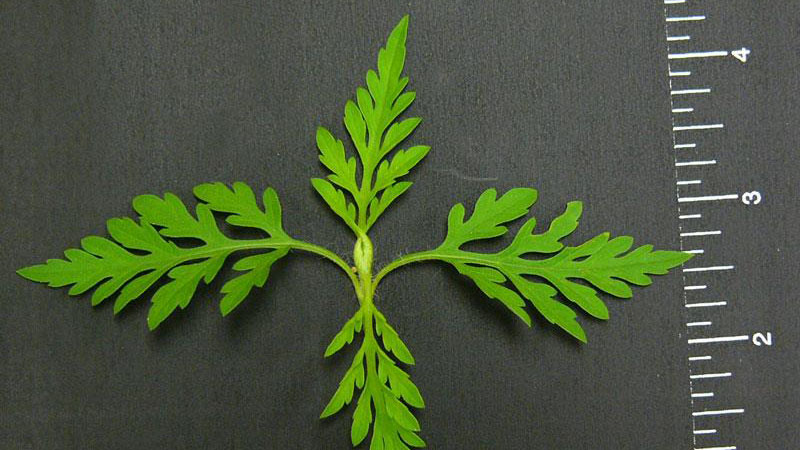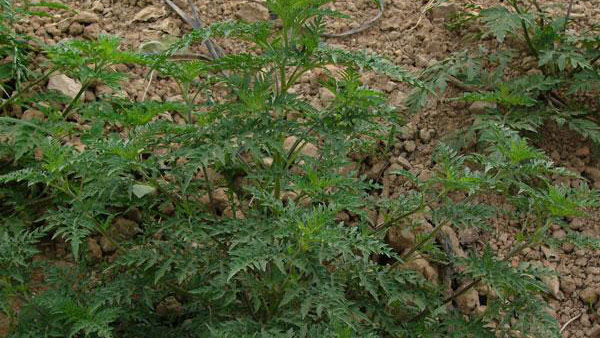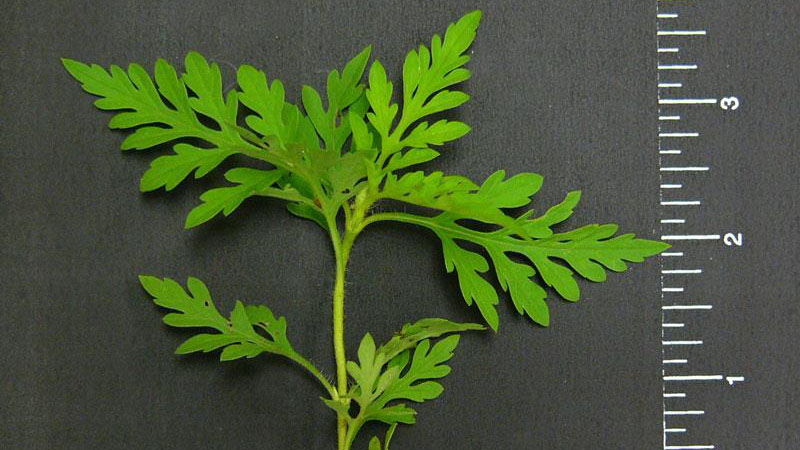Description
Common ragweed (Ambrosia artemisiifolia) is a summer annual weed that emerges early in the spring. It is often found in cultivated areas, but also occurs in roadsides and landscapes. It prefers heavy soils as opposed to sandy soils, and does not tolerate heavy mowing. The deeply dissected leaves are arranged oppositely when young, and alternately in older parts of the plant. Leaves are hairy on both surfaces. Ragweed produces copious amounts of pollen in the late summer, and often causes allergy problems.
Cultural Control
Maintain a dense, actively growing turf through proper mowing, fertilizing, and watering practices. Mow at the proper height for your selected adapted turfgrass. Coring and traffic control reduce compaction and encourage desirable turfgrass competition. It is best to control this summer annual broadleaf weed in late spring or early summer because it is easier to control at this time and the turf will have a greater chance of recovering the areas previously occupied by weeds.
Species Data
- GROWTH SEASON / LIFE CYCLE
- summer annual weed
- GROWTH HABIT
- LEAFLET NUMBER
- LEAF MARGIN
- lobed
- LEAF HAIRS
- upper / lower surface
- LEAF / LEAFLET SHAPE
- oval / egg-shaped / elliptical
- LEAF WIDTH
- 1 inch to greater than 2 inches
- LEAF VENATION
- pinnate
- LEAF ARRANGEMENT
- leaves are arranged oppositely when young, and alternately in older parts of the plant
Figure 6
- leaves are arranged oppositely when young, and alternately in older parts of the plant
- ROOT TYPE
- taproot with many root hairs
- FLOWER COLOR
- inconspicuous
Publication date: Nov. 22, 2017
N.C. Cooperative Extension prohibits discrimination and harassment regardless of age, color, disability, family and marital status, gender identity, national origin, political beliefs, race, religion, sex (including pregnancy), sexual orientation and veteran status.






